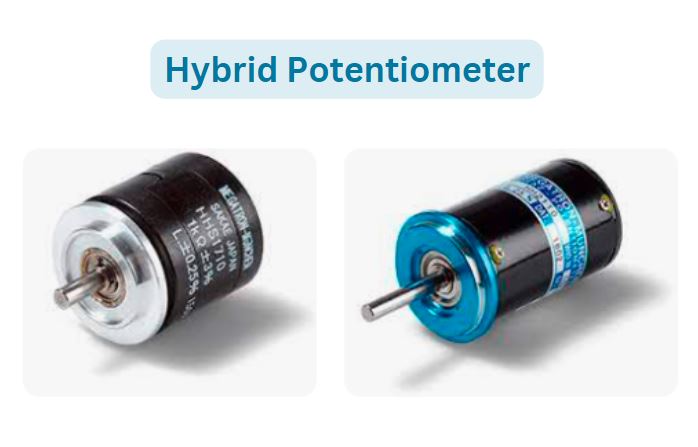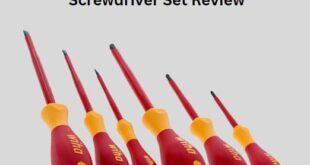Understanding Hybrid Potentiometers
Introduction
Potentiometers, commonly known as “pots,” are fundamental components in electronic circuits used to measure and adjust electrical resistance. Their primary role involves controlling voltage levels and current flow in various devices, from simple volume controls in audio equipment to complex industrial machinery. As technology advances, so does the need for more sophisticated and versatile components, leading to the development of hybrid potentiometers. This article delves into the intricacies of hybrid potentiometers, exploring their construction, functionality, applications, and advantages over traditional potentiometers.

What is a Hybrid Potentiometer?
A hybrid potentiometer is an advanced type of potentiometer that combines the best features of traditional mechanical potentiometers and modern digital potentiometers. This fusion results in a device that offers enhanced precision, durability, and versatility. Hybrid potentiometers are designed to provide the tactile feel and straightforward adjustment of mechanical potentiometers while incorporating the digital control and programmability of digital potentiometers.
Construction and Working Principle
Mechanical Component
The mechanical part of a hybrid potentiometer typically consists of a resistive element and a wiper. The resistive element can be made from various materials, such as carbon, cermet (a composite material composed of ceramic and metal), or conductive plastic. The wiper moves along the resistive element, changing the resistance between the wiper and the end terminals, thus adjusting the output voltage.
Digital Component
The digital aspect of a hybrid potentiometer integrates a microcontroller or digital interface that allows for precise electronic control of the wiper position. This digital control can be achieved through various means, such as pulse-width modulation (PWM), digital-to-analog converters (DACs), or other digital protocols like I²C or SPI.
Hybrid Integration
In a hybrid potentiometer, these two components work in tandem. The user can manually adjust the wiper position through the mechanical interface, while the digital interface allows for remote or automated control. This dual-mode operation provides flexibility and adaptability in various applications.
Advantages of Hybrid Potentiometers
Hybrid potentiometers offer several advantages over traditional mechanical and digital potentiometers, including:
Precision and Accuracy: The integration of digital control allows for finer adjustments and more precise settings, improving overall accuracy.
Durability: The mechanical wear and tear on traditional potentiometers can lead to degradation over time. Hybrid potentiometers, with their reduced reliance on purely mechanical movement, tend to have a longer lifespan.
Versatility: Hybrid potentiometers can be used in applications that require both manual and automated control, making them suitable for a wider range of applications.
Programmability: The digital interface allows for easy programming and remote control, which is beneficial in applications requiring frequent adjustments or automated operations.
Enhanced User Experience: The tactile feedback from the mechanical component provides a familiar user interface, while the digital control offers advanced functionality.
Applications of Hybrid Potentiometers
Hybrid potentiometers find applications in various fields due to their unique combination of features. Some common applications include:
Audio Equipment
In high-end audio equipment, hybrid potentiometers are used to control volume, tone, and balance. Their precise control and reduced noise levels improve audio quality and user experience.
Industrial Automation
In industrial settings, hybrid potentiometers are employed in machinery control, where precise and reliable adjustments are crucial. They are used in motor speed controls, robotic arms, and other automated systems.
Medical Devices
Medical devices often require precise adjustments and reliability. Hybrid potentiometers are used in equipment like infusion pumps, dialysis machines, and diagnostic instruments.
Automotive Systems
In modern vehicles, hybrid potentiometers are used for controlling various parameters such as throttle position, suspension settings, and climate control. Their durability and precision are critical in automotive applications.
Consumer Electronics
Hybrid potentiometers are increasingly found in consumer electronics, including gaming controllers, home automation systems, and smart devices, where they provide a blend of manual and automated control options.
Technical Considerations
When selecting a hybrid potentiometer for a specific application, several technical factors should be considered:
Resistance Range: The range of resistance values offered by the potentiometer should match the application’s requirements.
Linearity: The linearity of the potentiometer affects how accurately the output voltage corresponds to the wiper position.
Resolution: In digital control, the resolution determines how finely the wiper position can be adjusted.
Tolerance: The tolerance indicates the allowable deviation from the specified resistance value.
Power Rating: The power rating determines how much electrical power the potentiometer can handle without damage.
Temperature Coefficient: This factor indicates how the resistance value changes with temperature, which is crucial for applications operating in varying environmental conditions.
Future Trends and Developments
As technology continues to evolve, hybrid potentiometers are likely to see further advancements. Future trends may include:
Enhanced Miniaturization: As with many electronic components, there is a trend towards smaller and more compact designs without compromising functionality.
Improved Materials: Advances in materials science may lead to the development of more durable and precise resistive elements.
Integration with IoT: Hybrid potentiometers may increasingly be integrated with Internet of Things (IoT) devices, allowing for more sophisticated remote monitoring and control.
Increased Customization: Manufacturers may offer more customizable options to meet specific application needs, such as custom resistance ranges and specialized interfaces.
FAQs
Conclusion
Hybrid potentiometers represent a significant advancement in the field of electronic components, combining the best features of mechanical and digital potentiometers. Their precision, durability, and versatility make them suitable for a wide range of applications, from consumer electronics to industrial automation. As technology continues to advance, hybrid potentiometers are poised to play an increasingly important role in various fields, offering enhanced control and functionality. Understanding their construction, advantages, and applications can help engineers and designers make informed decisions when selecting components for their projects.
 Electrical Engineering World Wiring a Brighter Tomorrow!
Electrical Engineering World Wiring a Brighter Tomorrow!



